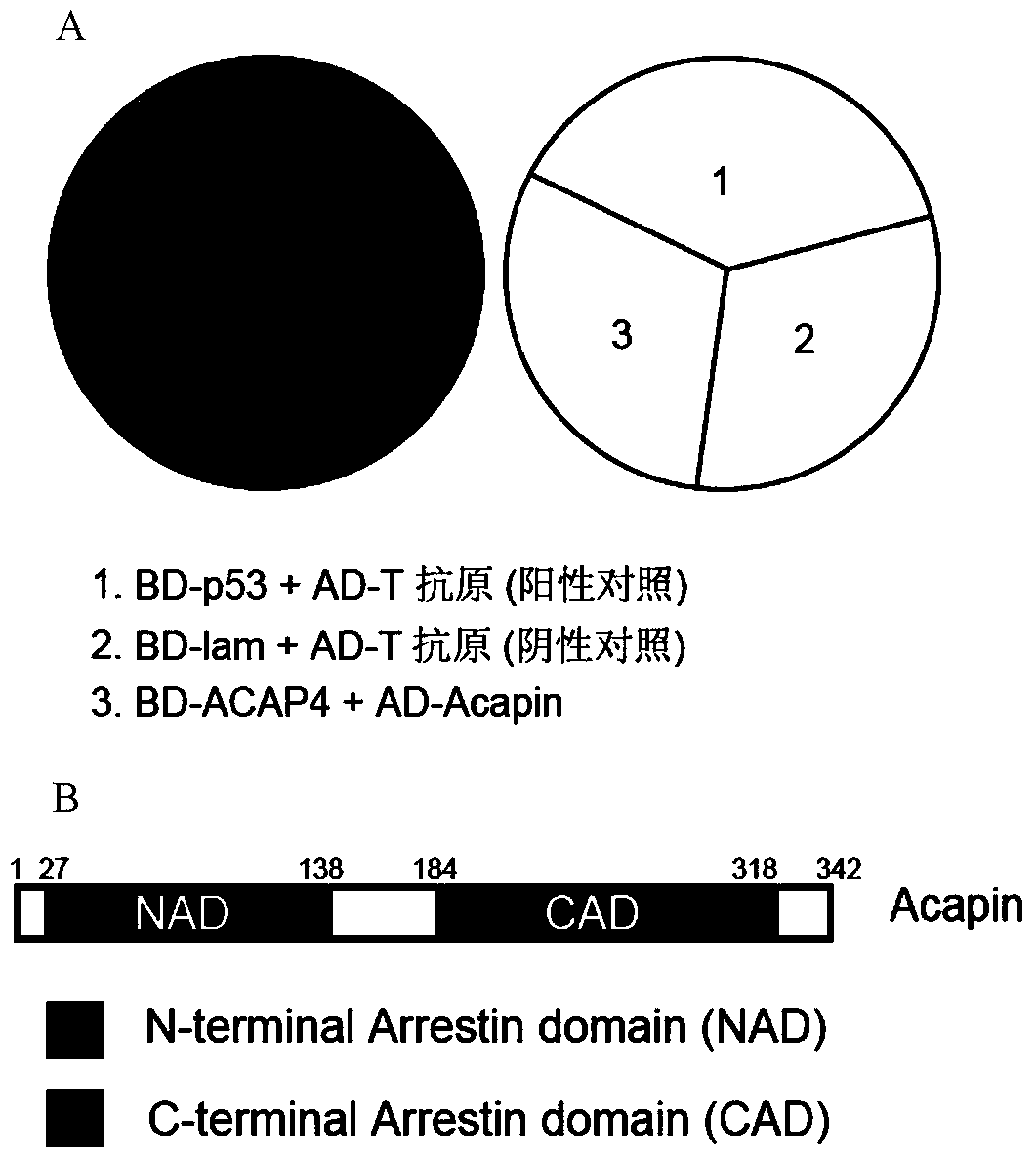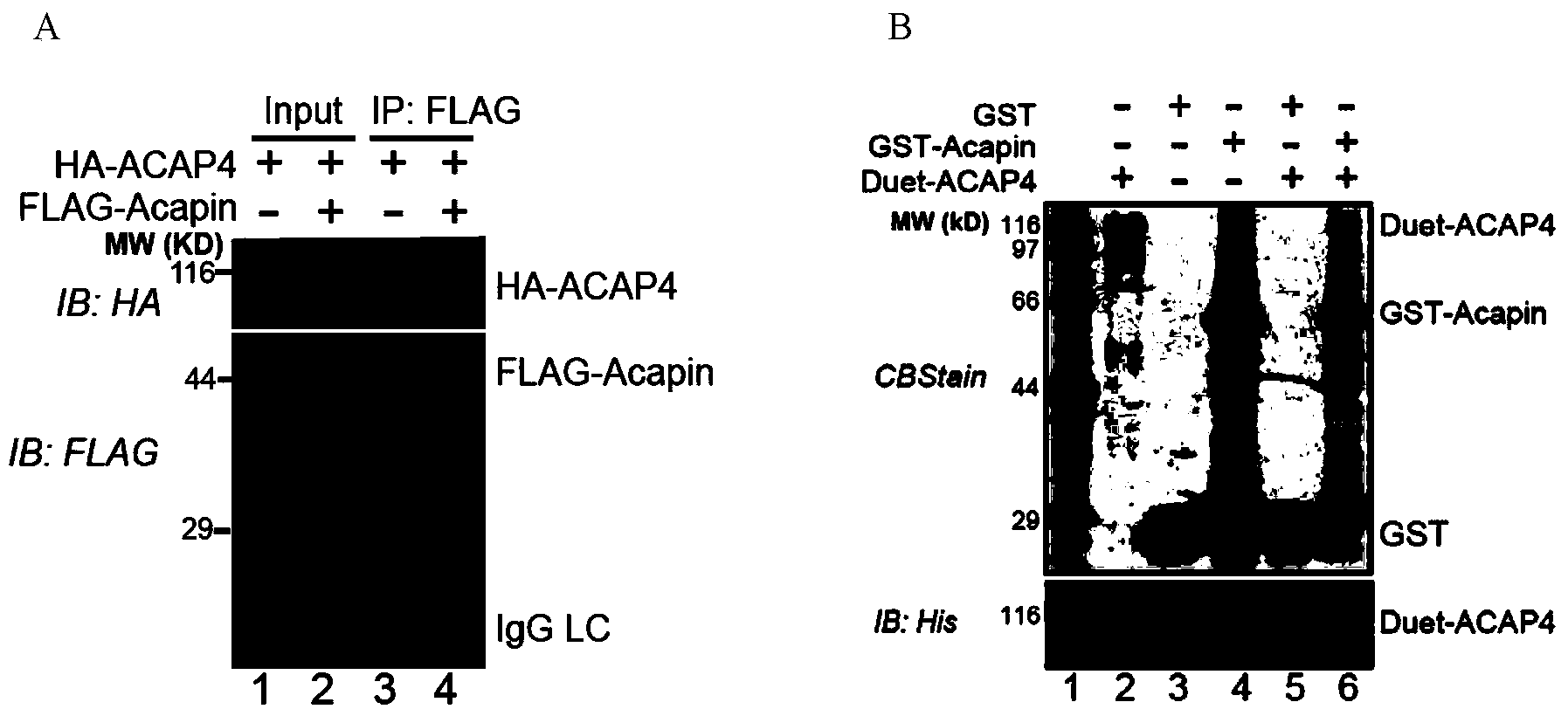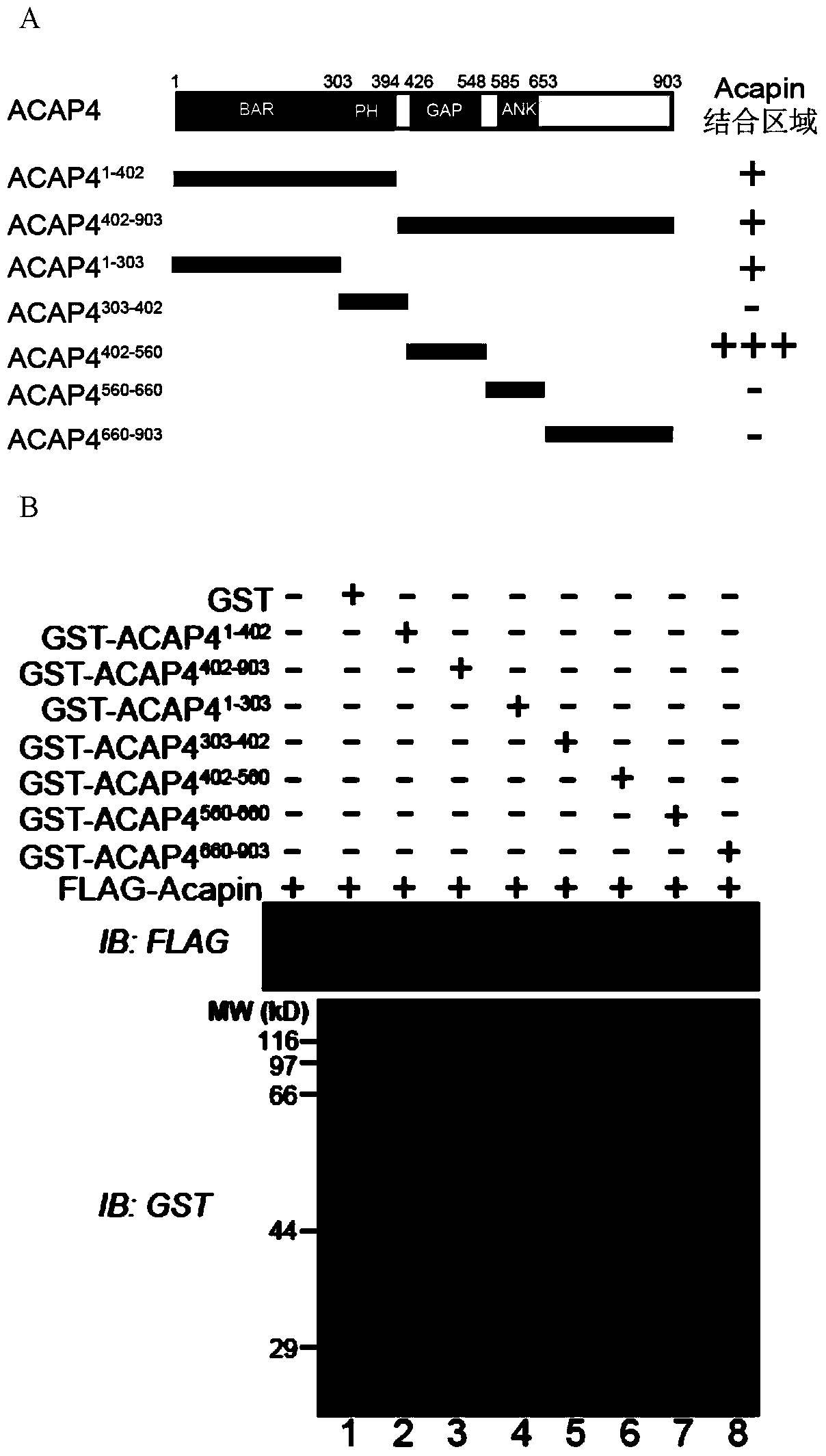Verification of ACAP4 activity inhibiting protein and functions of ACAP4 activity inhibiting protein in cell migration
A technology of activity inhibition and protein, which is applied in the field of protein and its coding gene and application, and can solve problems such as imperfections
- Summary
- Abstract
- Description
- Claims
- Application Information
AI Technical Summary
Problems solved by technology
Method used
Image
Examples
Embodiment 1
[0053] Example 1. Discovery and preliminary identification of ACAP4 activity inhibitory proteins:
[0054] 1. Discovery of ACAP4 activity inhibitory protein:
[0055] ACAP4 is an ARF6-GTPase activating protein named and patented by us (Ding et al., 2010; Fang et al., 2006). In order to further understand its function and molecular mechanism in cells and organisms, we use The yeast two-hybrid method was used to screen for interacting proteins. First, we use acap4cDNA (patent authorization number: ZL200610007868.X) as a template, apply primers acap4-f (upstream primer, SEQ ID NO: 3) and acap4-r (downstream primer, SEQ ID NO: 4), use polymerase chain The coding region of the acap4 gene was amplified by PCR. PCR was catalyzed by LA Taq polymerase (Takara Company), hot start at 94°C, annealing temperature at 60°C, and extension at 72°C for 3 minutes. After the reaction, the PCR amplification product was directly digested with NdeI and NcoI endonucleases (Takara Company), and the...
Embodiment 2
[0067] The detection analysis of embodiment 2, Acapin and ACAP4 interaction relationship:
[0068] 1. Detection of the interaction between Acapin and ACAP4 in cells:
[0069] Using the method in Example 1 to insert the Acapin gene into p3xFLAG-myc-CMV respectively TM In the -24 vector (Sigma company), the ACAP4 gene was inserted into the p-TRE-HA vector (BD company). HEK293T cells (purchased from ATCC) were subcultured into 10 cm culture dishes with a cell density of about 60%, and placed in a cell culture incubator for culture and growth. After 24 hours, HA-ACAP4 was single-transfected or co-transfected with FLAG-Acapin into HEK293T cells according to the method of calcium phosphate transfection cells in the "Molecular Cloning Experiment Guide", and the cells were collected 24 hours later for co-immunoprecipitation experiments . Cells were first lysed with cell lysis buffer (50 mM HEPES, pH 7.4, 150 mM NaCl, 2 mM EDTA, 1 mM DTT, 0.5% TritionX-100, 1 mMPMSF). After centrif...
Embodiment 3
[0072] Example 3, Acapin analysis of ACAP4GAP activity inhibitory function:
[0073] 1. Acapin binds to the GAP functional domain of ACAP4:
[0074] Using the method in Example 1, the different functional domain fragments of ACAP4, ACAP4 1-402 , ACAP4 402-903 , ACAP4 1-303 , ACAP4 303-402 , ACAP4 402-560 , ACAP4 560-660 , ACAP4 660-903 Inserted into the pGEX-6P-1 vector (Amershanm Bioscience Company), such as image 3 .A shown.
[0075] Using the method in Example 2, ACAP4 proteins expressing and purifying different functional domains were incubated with FLAG-Acapin expressed in HEK293T cells. In vitro pull down results are as follows image 3 .B shows that the GAP functional domain of ACAP4 has the strongest binding ability to Acapin, while the BAR functional domain has a weaker binding ability to Acapin.
[0076] 2. Acapin and ARF6 competitively bind ACAP4:
[0077] Using the method in Example 1, Acapin and ARF6 genes were inserted into the p-TRE-HA vector (BD com...
PUM
 Login to View More
Login to View More Abstract
Description
Claims
Application Information
 Login to View More
Login to View More - R&D
- Intellectual Property
- Life Sciences
- Materials
- Tech Scout
- Unparalleled Data Quality
- Higher Quality Content
- 60% Fewer Hallucinations
Browse by: Latest US Patents, China's latest patents, Technical Efficacy Thesaurus, Application Domain, Technology Topic, Popular Technical Reports.
© 2025 PatSnap. All rights reserved.Legal|Privacy policy|Modern Slavery Act Transparency Statement|Sitemap|About US| Contact US: help@patsnap.com



